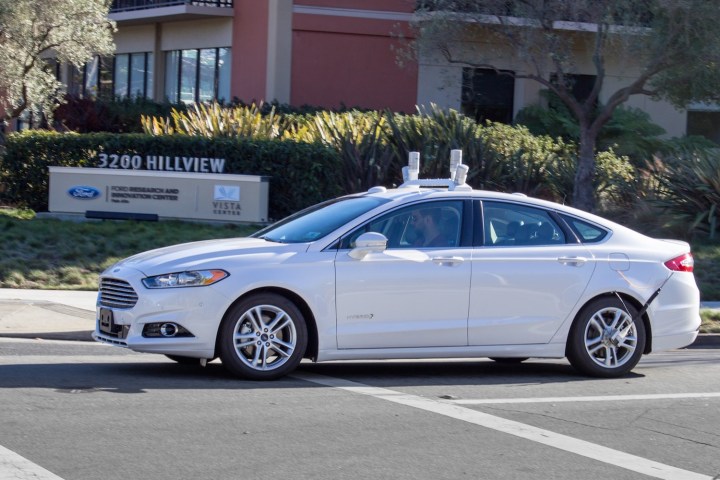
With approval to join the CA Autonomous Vehicle Tester Program, Ford’s Palo Alto Research and Innovation Center will serve as the hub for experiments commencing in 2016. A team of more than 100 researchers, engineers, and scientists (80 percent Ford staff, 20 percent technology sector recruits) will shuttle out self-driving Fusions to sit at stoplights with autonomous vehicles from Google.
Before the rubber meets the road, Ford has conducted numerous “virtual” test drives with its self-driving technology to study the interaction between the autonomous cars and pedestrians. By doing so, the actual cars will have learned how to avoid dangerous situations during a variety of “unexpected” circumstances.
In addition to tests out of its Palo Alto center, Ford is testing its Fusion Hybrid Autonomous Research Vehicle at the University of Michigan’s Mcity — a 32-acre site equipped with a simulated urban environment. Multi-lane roads, roundabouts and several different road surfaces are available to prepare the self-driving cars for active duty.
Of course the question is now raised how Ford and other autonomous vehicle testers will adapt to California’s proposed legislation that would ban driverless cars from its roadways. The present, comparatively lax rules, would be updated to mandate a steering wheel and pedals for any autonomous vehicle on California roads in addition to requiring a human behind the wheel with an “autonomous vehicle operator certificate” in case of a mechanical malfunction.
More than just a restriction on tests, the rules would mean autonomous taxis and commercially available driverless cars would be out of the question in California.
Google has been quick to criticism the proposed legislation. Google Director Chris Urmson went on record as stating, “”[The proposed rule] maintains the same old status quo and falls short on allowing this technology to reach its full potential, while excluding those who need to get around but cannot drive.”
Editors' Recommendations
- Waymo robotaxi attacked and set on fire in San Francisco
- Cruise woes prompt production halt of fully driverless van
- Dubai Police to deploy driverless patrol cars with AI smarts
- Cruise autonomous vehicle drives over woman just after she was hit by another car
- Cruise says it’s nearing approval for mass production of futuristic robotaxi

